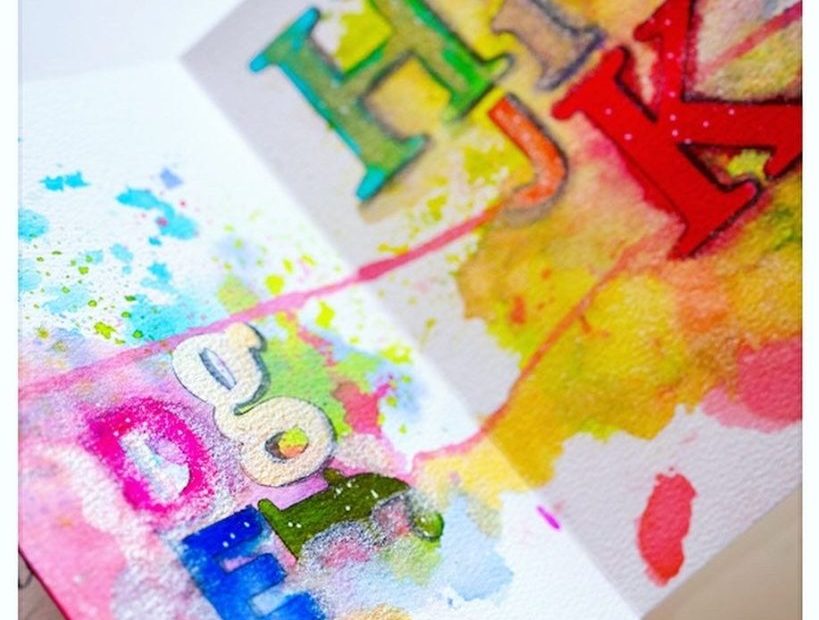Most of us dread a blank wall, page, and monitor because they signify a mental or a creative block. Or worse, creative fatigue. The space where we find ourselves spent or utterly unable to take a step or make a decision. And when decision paralysis takes over, it seems like nothing will pop that bubble.
Recently, I ran into the dreaded blank wall—a tall, thick wall of nothingness. There was a void in my mind and nothing to fill it with. Looking at my photos from Italy gave me nothing. Browsing my Pinterest boards left me in no better place. Reading spurred no ideas to the surface. (I am reading two books currently: Your Brain in Art by Susan Magsamen and Ivy Ross and The Forger Spell by Edward Dolnick. I hope to tell you about them soon.)
There are countless formulas for being more creative, artistic, and inspired. Typing the words “how to be more creative” in whichever search engine you prefer will return countless articles from experts and non-experts. There are many posts, articles, and books on how to be more creative and train your brain to have more ideas. The dreaded “x # ways to be…” are a dime a dozen. Like sheep, we read and practice the advice, hoping to crack our creative block or blank wall.
One of my favorite movies from the 80s is The Karate Kid. Many of the movie’s scenes are memorable, but the one that resonates with me most is the car washing scene. In it, Mr. Miyagi teaches Danny, his new, bullied, and eager student, how to wash cars. Not any car washing, mind you. No. Mr. Miyagi teaches Danny how to move his hands while washing a car. Miyagi’s technique is the now famous Wax On, Wax Off. Discussed many times before, we all laugh at Mr. Miyagi’s astuteness and Danny’s ignorance. Of course, it is easy to see how Danny was ignorant and foolish. Quite frankly, however, we are Danny. Yes, we are the ignorant ones. Routine tasks are often the foundation of creative sparks.
Creative blocks, blank walls, and paralysis stem from an unwillingness to make decisions. Conversely, too many decisions, ideas, and thoughts can lead to the same place of nothingness. But, when we decide, all the other possibilities go away or get put on hold. And that one moment can be a scary place. The one decision that will define a path for whatever amount of time, be it a few hours or years. All those other possibilities? At the very least, they must wait their turn to return to see another day.
Decision paralysis has a certain allure. It invites empathetic comments and advice from others, makes you look like you have been productive, and makes you look like you have an overflow of ideas. It makes us look busy while not taking a single step. After all, we are considering options, right? Except that we are not. Instead, we are effectively and actively nursing a state of inaction, stagnation, and inertia. A decision will break the spell. But, we hesitate. We wonder over and over.
On Thursday, I found myself in the void. I took a break from my daily practice during my trip to Italy. There were too many variables, and it being my first time, I leaned into observing and learning from my coworker. But I was back now and felt this dread. I had no cute thoughts, phrases, or particular paths to explore. I was completely and utterly immersed in an uninspired void. It occurred to me that I would not get out of the void if I spent time mulling over it. So I walked to my bookshelf, to the shelf of new sketchbooks. I grabbed the accordion-bound watercolor sketchbook.
Because it opens like an accordion, I thought, oh, cool, a storyline. But, instead of creating a story, I opted for mixing watercolors for the background of each panel. If I did something I was familiar with, something might ignite. That was a good thought, but nope. My process continued to include letters, and since there was continuity, I used the alphabet. I made each decision in this process linearly and rationally. There was very little or no emotion while I was working on it. I would finish something, look at it, dry it out if needed, revise it, look at it again, and so on. There was no romantic rapture or burning sense of an epiphany.
By the last panel, I saw something that surprised me. Finishing the sketchbook—the last panel felt like a triumph. I had decided to pop the uninspired void, and something came out. It matters little if it is beautiful or not. What matters is that showing up to do the work.
© Alma Hoffmann, 2024
Alma Hoffmann is a freelance designer, design educator, author of Sketching as Design Thinking, and editor at Smashing Magazine. This is an edited version of a post originally published on Temperamental amusing shenanigans, Alma’s Substack dedicated to design, life, and everything in between.
All imagery © Alma Hoffmann.
